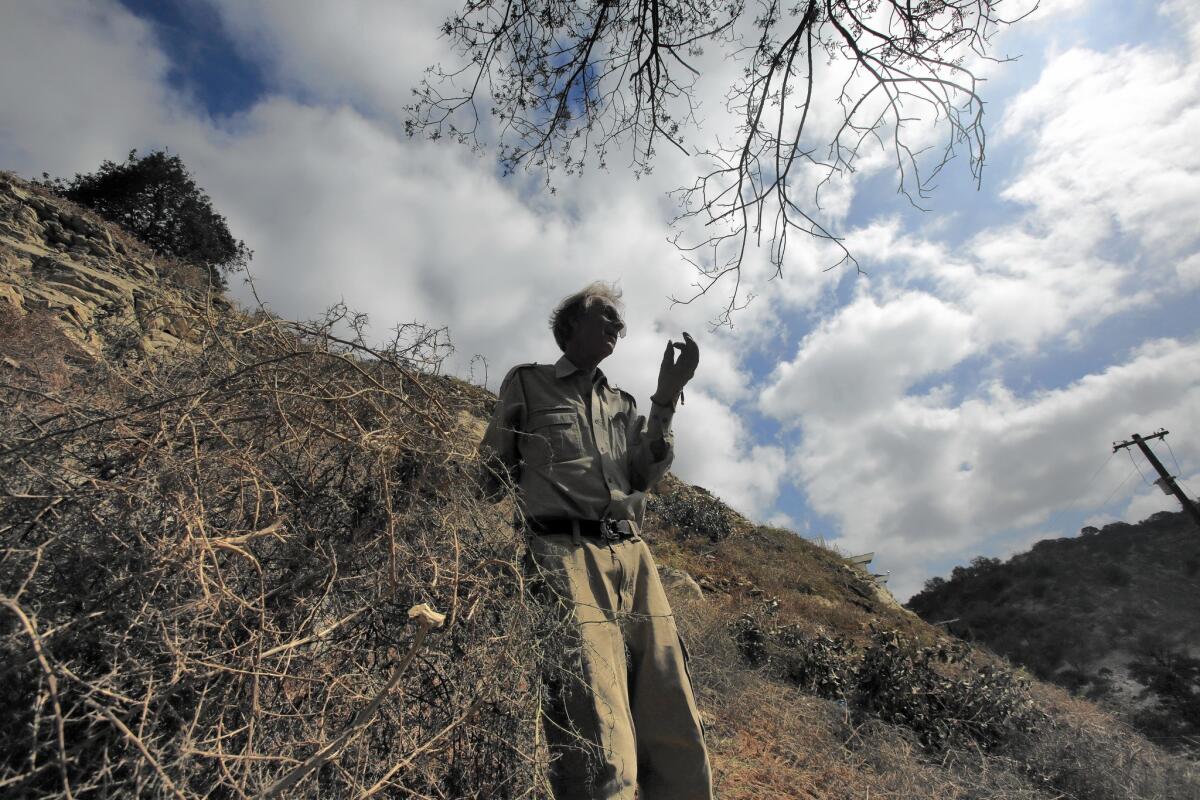Drought triggers Southern California tumbleweed infestation

- Share via
Three years of drought have triggered an infestation of tumbleweeds across Southern California, raising the risk of wildfires, especially in the foothill areas.
“The Los Angeles basin is facing a tumbleweed problem that hasn’t happened in quite some time,” said David Bracken, a deputy commissioner for the Los Angeles County Department of Agriculture. Bracken said tumbleweed infestations are largely cyclical and will diminish in the years ahead.
Los Angeles County firefighters are reminding homeowners that they are responsible for clearing their property of growth that presents a fire hazard. Tumbleweeds break off in the fall and turn into what amounts to rolling balls of kindling.
“There is an established brush-clearance program in place and we expect homeowners to maintain defensible space around their property year-round,” said Kevin Johnson, assistant chief of the L.A. County Fire Department’s Forestry Division.
Arnold Newman, a botanist and president of the Oak Forest Canyon Homeowners Assn. in Sherman Oaks, said that when he moved to the canyon in 1967, “this entire area averaged a few dozen tumbleweeds, which was of no concern. Now the canyon has an estimated 8,000 to 10,000 pale green sprouts.”
The California Department of Transportation is responsible for weed control on state-owned roads, and the county Agriculture Department annually clears tumbleweeds from thousands of acres of county airports, roads and rights of way, and interfaces of housing developments and open fields in the Antelope Valley. But private property owners must clear their own land.
Tumbleweeds typically grow in lots and fields dominated by competing invasive plants: mustard, castor bean and tree tobacco. This year, however, drought conditions and scant rains that fell in late spring as tumbleweeds were beginning to sprout allowed them to push through rival vegetation.
Once they break off, the balls of thorny branches up to 4 feet in diameter are easily blown by the wind, clogging ravines and stacking up against anything in their path: fences, gates, highway rights of way, telephone poles and homes.
Some heavily infested areas include portions of the San Fernando Valley, Griffith Park, the hill country between Orange and Riverside counties, the foothills of the San Gabriel and Santa Monica Mountains, and the Antelope Valley, officials say.
Tumbleweed, or Russian thistle, has been a cyclical problem since it came to the United States in the 1870s in shipments of imported flax seed. In dry years, the population sometimes soars. After a few good rains, it subsides again.
The battle to eradicate tumbleweeds has been spotty and largely ineffective. That is because the weed thrives on public lands, or low-value vacant lots or fallow farmlands, making it economically ineffective to attack the plants with chemical herbicides and conventional weed-control approaches.
Dana Berner, a plant pathologist with the U.S. Department of Agriculture, is looking for means of fighting tumbleweeds with natural-born killers: species of fungi that hold it in check in Russia.
Berner said preliminary tests suggest that the experimental treatments are “environmentally safe and effective, from our perspective. But they still have to be approved for release by the U.S. Department of Agriculture’s Animal and Plant Inspection Service.”
As for now, Newman’s homeowners association is trying raise funds to pay for a private assault on tumbleweeds in Oak Forest Canyon.
louis.sahagun@latimes.com
Twitter: @LouisSahagun







